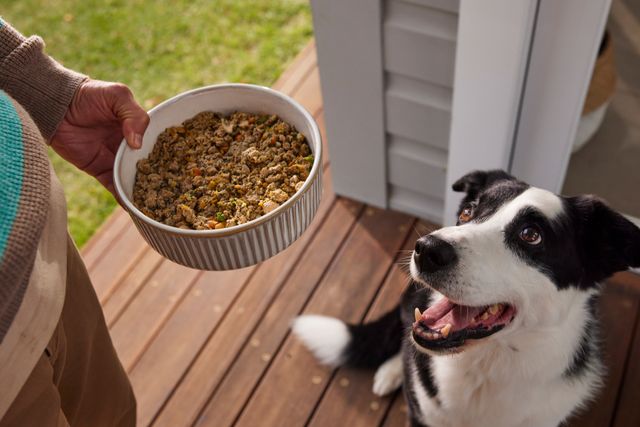
What Pet Food Ingredients Trends Are Shaping Latin America’s Market in 2030?
Share
Latin America Pet Food Ingredients Market is entering a new phase—driven by rising pet ownership, evolving consumer awareness, and an increasingly global supply chain. In 2025, manufacturers and ingredient suppliers across Brazil, Mexico, Argentina, and Chile are responding to global trends such as clean-label nutrition, sustainable sourcing, and functional health solutions. These shifts are not only redefining ingredient choices but are also shaping how pet food is formulated, marketed, and regulated throughout the region.
Let us explore the key ingredient trends and market movements influencing Latin America's pet food sector—grounded in the latest data and industry observations from credible 2024–2025 sources.
How Is Sustainability Reshaping Ingredient Choices in Latin America?
According to the Pet Food Industry Market, Sustainability is no longer optional—it is central to consumer and industry priorities across the pet food supply chain.
- Latin American companies are increasingly under pressure to address sustainability, especially through ingredient sourcing and environmental impact.
- As highlighted at Global Pet Expo 2025, sustainability remains a top focus across regions, including Latin America. Brands are using it to differentiate their products, particularly in markets such as Brazil and Chile, where consumer awareness is rising fast.
Concluding Points:
- Sustainability is directly influencing sourcing decisions across the region.
- Latin American pet food players must align with global sustainability narratives or risk falling behind.
What Functional Ingredients Are in Demand in 2025?
According to the Pet Food Industry Market, the Latin American consumers, especially in urban markets, are increasingly seeking functional pet foods that address specific health concerns.
According to industry analysis, pet owners worldwide are looking for ingredients that offer real health benefits, and this demand is now influencing Latin America’s ingredient profiles too. These include:
- Probiotics and prebiotics for digestive health
- Omega fatty acids for skin and coat support
- Botanical extracts like turmeric or chamomile for calming effects
- Collagen and glucosamine for joint health in senior pets
"The global pet food ingredients market is expected to reach US $73 billion by 2031, with growing demand for functional and fortified products across regions including Latin America."
Concluding Points:
- Latin American brands are incorporating functional ingredients to meet health-conscious consumer demands.
- Formulators are integrating science-backed additives to differentiate and justify premium pricing.
Are Clean Labels and Transparency Driving Ingredient Innovation?
According to the Ingredients Network, yes its’s clean-label trends have arrived in Latin America—and are transforming how pet food products are developed and marketed.
- Clean-label products emphasize short, recognizable ingredient lists free from artificial colours, preservatives, and fillers.
- As seen globally, consumers in Latin America are demanding ingredient transparency and traceability.
According to Ingredient Network’s 2024 report, brands worldwide are investing in ingredient integrity, which includes using natural antioxidants, non-GMO grains, and ethically sourced proteins. These values are increasingly resonating with Latin American consumers—especially in high-income segments.
“Sustainability and ingredient transparency have become key drivers of innovation and consumer trust in the pet food industry.”
Concluding Points:
- Latin American brands are working to remove synthetic additives and include human-grade or locally known ingredients.
- Ingredient labelling is becoming a competitive tool, not just a compliance measure.
What Ingredient Challenges Are Emerging in the Region?
According to the Pet Food Industry Market, despite the optimism, the Latin America faces unique challenges in upgrading its pet food ingredient standards:
- Price sensitivity: Many markets still prioritize affordability, which can hinder adoption of premium ingredients.
- Regulatory inconsistencies: Unlike the United States or EU, Latin America has fragmented regulatory oversight across countries.
- Ingredient availability: Limited access to certain functional or novel ingredients can create formulation bottlenecks.
During Global Pet Expo 2025, regional suppliers raised concerns about the affordability of novel and sustainable ingredients, especially in Latin American markets with low disposable income levels.
Concluding Points:
- Bridging the gap between innovation and affordability remains a regional priority.
- Regulatory harmonization may be required to enable wider adoption of advanced ingredients.
What Is the Outlook for Ingredient Innovation in Latin America?
Looking ahead, Latin America is expected to become a growth hotspot for ingredient innovation, especially as regional economies stabilize and premiumization continues.
Key projected trends include:
- Growth in alternative protein ingredients such as insect meal and microbial protein
- Wider adoption of functional superfoods like chia, quinoa, and amaranth
- Enhanced traceability systems for ingredient sourcing and food safety
The global pet food ingredients market will continue to expand at a steady pace, and Latin America is poised to benefit from both international investment and regional manufacturing capability.
"Sustainability, functionality, and safety are no longer niche; they are mainstream demands influencing ingredient choices globally."
Concluding Points:
- Latin America’s pet food industry is on track to adopt global ingredient trends.
- The region’s future lies in balancing innovation with local market realities.
Next Steps: What Should Industry Stakeholders Do Now?
To capitalize on the momentum in Latin America’s pet food ingredient market, stakeholders should:
-
Invest in sustainable supply chains
Develop regional partnerships to minimize import dependencies. -
Educate consumers on functionality
Use packaging and marketing to highlight the benefits of omega-3, probiotics, and antioxidants. -
Advocate for regulatory coherence
Collaborate with governments to create harmonized ingredient safety and labelling standards. -
Support local sourcing initiatives
Encourage ingredient traceability and transparency to build consumer trust. -
Monitor global ingredient trends
Participate in international trade shows to stay informed on innovations relevant to Latin American markets.